While Saudi Arabia builds its futuristic city as part of Vision 2030, we travel back 2,000 years to the living museum of AlUla and discover sites steeped in history, but perfectly Instagrammable
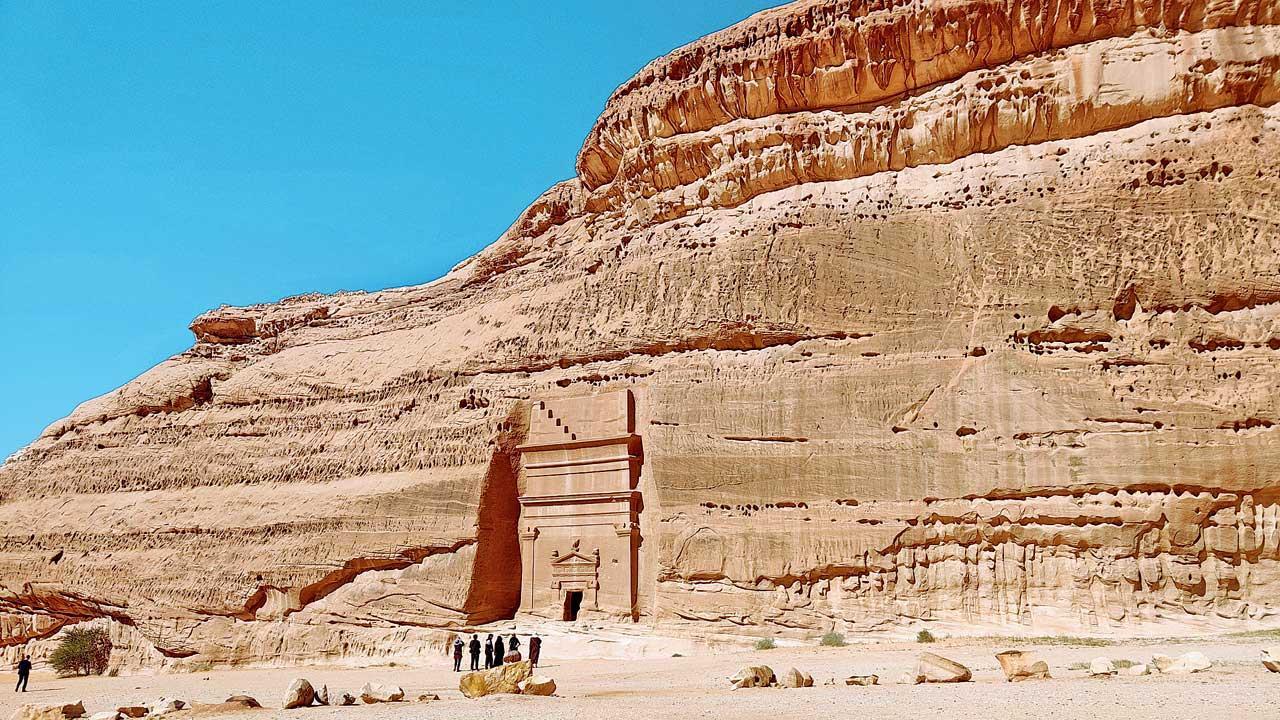
Hegra in AlUla is a UNESCO World Heritage site, comprising over 130 tombs built over 2,000 years ago
On the second day of our visit to AlUla, the guide throws us a challenge, laying out flat rocks, hammers, chisels and a handbook of the ancient Aramaic language in front of us: Carve your name on a piece of rock in Aramaic. When in AlUla, do as the Nabataean civilisation people did 2,300 years ago. There’s a problem though—two letters of my name, E and P, don’t feature in the language. That may be my only grouse with this chapter of history that remains tucked away in the golden deserts of Saudi Arabia, away from the eyes of even the most discerning travellers. This was until Crown Prince Mohammed bin Salman opened the historical city to tourists three years ago.
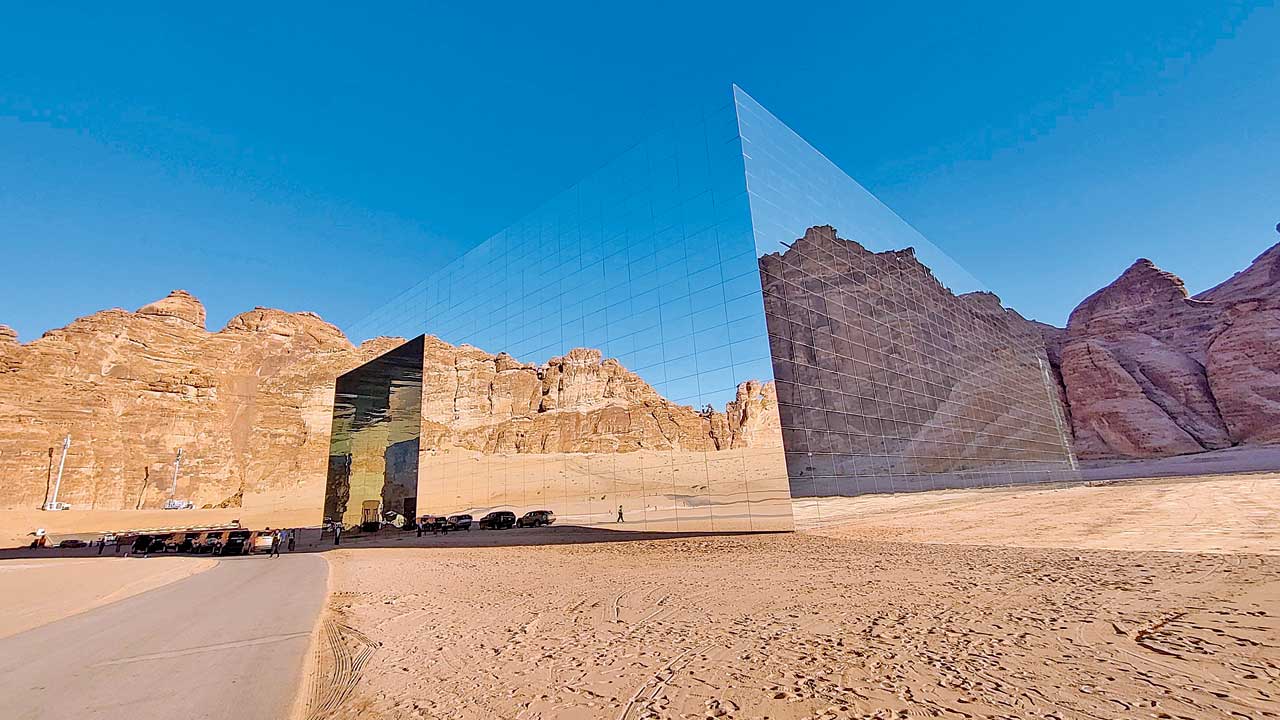 Maraya Concert Hall in AlUla is the world’s largest mirrored building and currently houses Andy Warhol’s collection
Maraya Concert Hall in AlUla is the world’s largest mirrored building and currently houses Andy Warhol’s collection
And just like that, AlUla, barely a two-hour plane ride from Riyadh, was ready to wrestle for a spot on everyone’s must-visit list. Its biggest claim to fame is Hegra, a UNESCO World Heritage Site. At first glance, the archaeological site reminds us of her famous sister city, Petra from Jordan, which caught everyone’s attention in Steven Spielberg’s Indiana Jones and the Last Crusade (1989). But we go where Spielberg and his swashbuckling hero didn’t.
We drive through the sun-speckled expanse comprising over 130 tombs built over 2,000 years ago, taking in the lives of the Nabataeans, a prosperous lot that thrived between 4BC and 1 AD. According to Britannica, Nabataean settlements lay in the borderlands between Syria and Arabia, from the Euphrates River to the Red Sea. Little is known about them before 312 BC, when they were unsuccessfully attacked by the king of Macedonia, in their mountain fortress of Petra. Their monopoly on the rich caravan trade that passed from the Arabian interior to the coast was the chief source of their prosperity.
 A panoramic view of the Old Town from the top of the castle
A panoramic view of the Old Town from the top of the castle
The Qasr al-Farid (the Unique Mountain) forms the piece de resistance. Like other tombs in the vicinity that have been carved out of rocks, it has five steps at the top of the structure, which were built believing that they would help the souls ascend to the after-life; the eagle motif at the door represents the tribe’s chief god, Dushara. But what sets the Qasr al-Farid apart is its story. Our rawi (storyteller in Arabic) tells us that the most iconic tomb is, in fact, an incomplete work of art. “Lihyan, whom the tomb
belongs to, was not buried here. A theory suggests that he may have died in a battle elsewhere, and his body was not recovered,” she shares. The tomb remains empty, and the façade, unfinished.
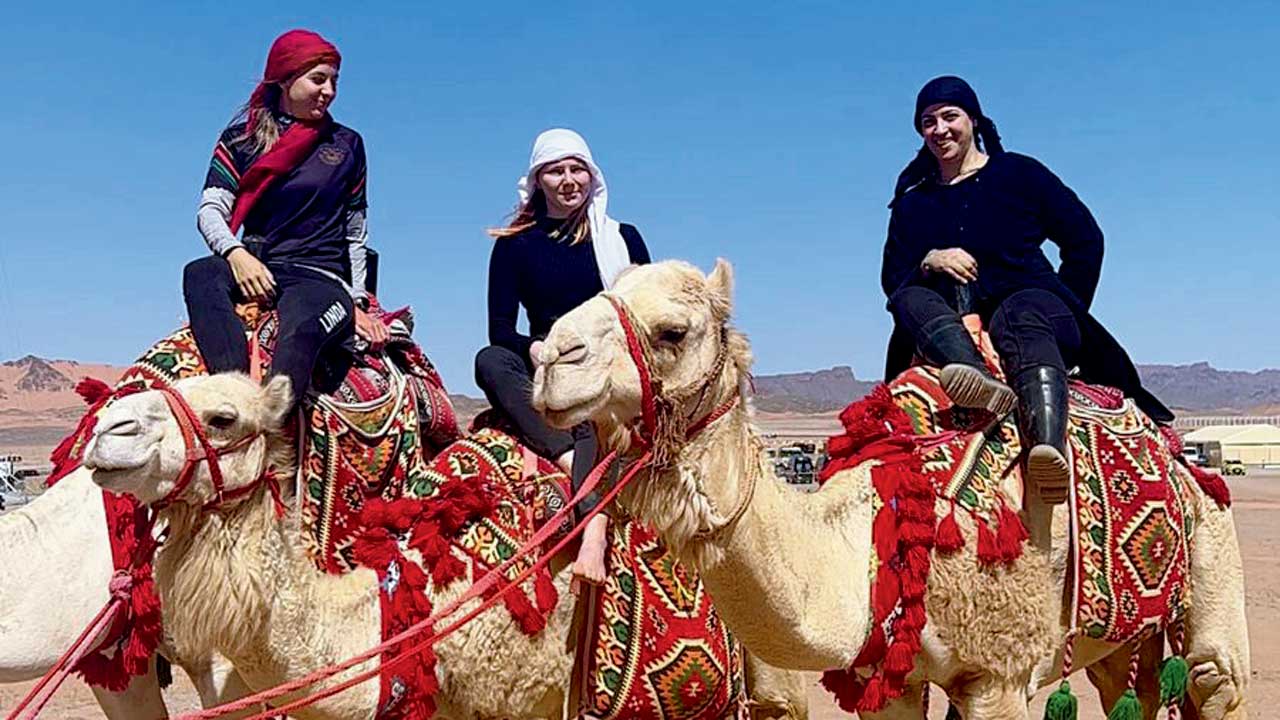 Germany’s Linda Krockenberger (extreme left) was one of the three female jockeys at the Camel Cup
Germany’s Linda Krockenberger (extreme left) was one of the three female jockeys at the Camel Cup
Something tells us that the Qasr al-Farid, or even the Face Rock nearby—which quirkily resembles a human face—will go on to serve as the backdrop for that perfect Instagram picture for millions of social media users. But this writer hopes that Hegra’s rich history doesn’t get lost in the heap of filter-driven pictures. That the past and future can co-exist.
Also Watch: Travelling to Saudi Arabia's AlUla
They can, we realise, as we come face-to-face with Hinat, whose skeleton was discovered by the archaeologists in the Jabal AlAhmar (the Red Mountain). Marrying the past with today’s technology of facial reconstruction, the team then rebuilt her face, and affectionately named her Hinat.
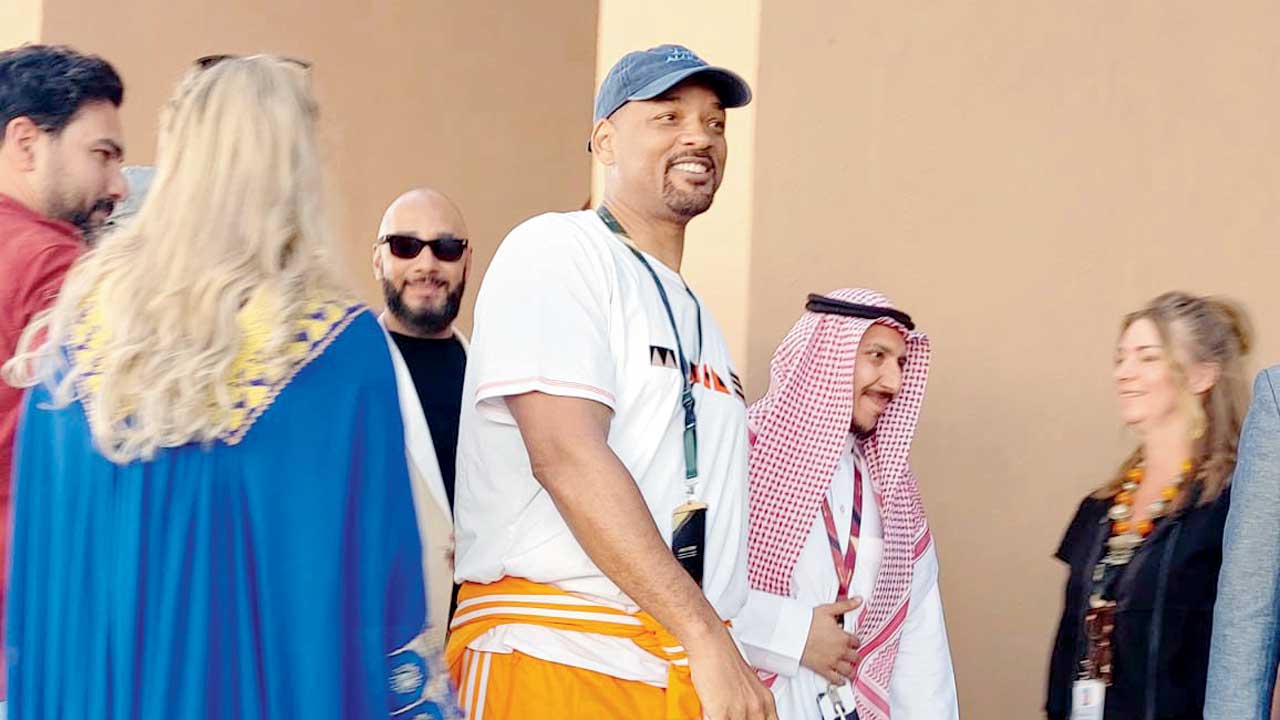
Hollywood star Will Smith arrived to great cheers at the AlUla Camel Cup event
In our five-day trip to Saudi Arabia, the confluence of the past and future, of tradition and technology, appears as a recurring motif. The Crown Prince may be building the futuristic Neom project, as part of his Vision 2030, but in AlUla, he prods you to go back in time.
The wondrous Jabal Ikmah, an open library that we walk through while taking in the 200 inscriptions and petroglyphs on the sandstone cliffs and crevasses tells us all we need to know about the ancient city of Dadan, from the 14 kings who ruled it, to the animal sacrifices that were performed in the day. Before we get too lost in history, we are brought back to modern times at the Maraya Concert Hall, the world’s largest mirrored building. The dazzling structure reflects the rock formations it is surrounded by, giving an impression of vast endlessness. Our only reaction: marvel, as much at the creation, as at the eclectic Andy Warhol collection that it houses until May.
 A team of archaeologists discovered a woman’s skeleton in the tombs, in 2014. Her face was then reconstructed, and she was named Hinat
A team of archaeologists discovered a woman’s skeleton in the tombs, in 2014. Her face was then reconstructed, and she was named Hinat
We are now ready to give history a rest and sample adventure. Full disclosure: Initially, the idea of a four-day camel race sounded mind-boggling. But when we step into the inaugural edition of the AlUla Camel Cup event, we know that they mean business. From a special circuit built for the flagship event, to a heritage village a la a Middle-Eastern souq, the warm and hospitable organisers have pulled all stops to give visitors an immersive experience. Frenzied excitement greets us at the race as spectators cheer on wildly every time the camels trot by their stands. The animal may be no Lewis Hamilton on the track, but as we take in the 16 different marathons—some with human jockeys at the reins, and others with robot jockeys—it’s easy to see the deep investment of the locals. The cheering gets louder on the final day, as Hollywood actor Will Smith takes to the stands to root for his producer-friend Swizz Beatz’s team Saudi Bronx. Did we gawk at Smith, like teenagers? Absolutely. Was he the star of the event for us? Not quite.
That would have to be Linda Krockenberger, one of the three female jockeys who rode beside their male counterparts, shoulder-to-shoulder, on the opening day. In a country that is gradually relaxing its restrictions, it is heartening to see a woman take on a male-dominated sport. “I hope other women get inspired by this. If they want to participate in camel racing, they know it is possible. My participation was very well-received. Hopefully, it’s not the last race where women [will compete] alongside male jockeys,” the Germany-born Krockenberger, who represented her country at the event, tells mid-day.
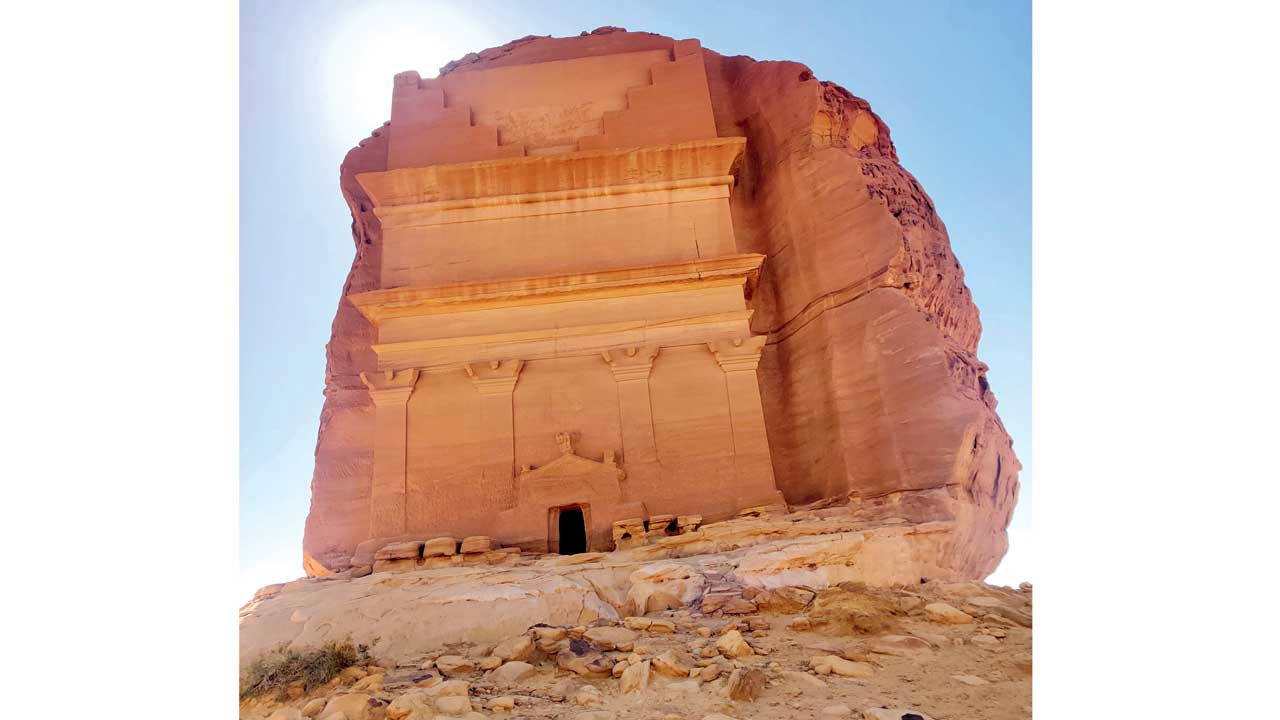 The Qasr al-Farid is the most iconic tomb in Hegra
The Qasr al-Farid is the most iconic tomb in Hegra
The winds of change are blowing. Women tourists, for instance, no longer have to wear the abaya, or cover their head (but you’d be well-advised to dress in modest outfits that go below your knees and have long sleeves). We also spot a rustic-themed Starbucks against AlUla’s golden sandy vista, an irrefutable sign of the country’s Westernisation. Fancy a Starbucks cappuccino? Naah! We’ll take a cup of piping hot za’atar tea by the roadside, thank you. There’s enough in the Arab cuisine to delight your palate. The less experimental can try the various varieties of couscous salad, or the trusted falafel. To the meat-lovers, we suggest taking generous helpings of the kabli rice, a delicious beef preparation that sits on a bed of fragrant grains.
On the last day of our trip, we walk through the Old Town, a labyrinth of mudbrick houses and markets. When we climb the 197-odd steps of the castle at its heart, a breathtaking view of the town awaits us, the cluster of houses reminding us of the civilisation that lived millennia before us. Our day draws to a close with a scrumptious dinner near the Elephant Rock. The awe-inspiring monolithic geological formation looms large as our group exchanges stories, numbers and laughs. In that instant, we can’t help but muse that a champagne toast would have been the perfect way to cap off the surreal experience that was this trip. We guess we’ll have to settle for a toast over cola, instead.
197
No. of steps to the castle that sits at the heart of the AlUla Old Town
How to get there
Fly from Mumbai to Riyadh; direct flights from Riyadh to AlUla take about 2 hours. You can also consider travelling by road. Hegra is located 22 kms from the AlUla Old Town. For more, log into https://www.experiencealula.com/
Weather
Current temperatures vary between 33 degrees C and 11. Dress in modest summer wear and avoid transparent, sleeveless or very short garments. Covering the shoulders and knees is good advice, we think. A head scarf is not essential anymore but carry one along in your bag in case you come across a religious site that you wish to explore and requires you to cover your head.
Taking local art to the world
In the course of our trip, we are introduced to the Madrasat AdDeera, an art and design centre in AlUla. Mentored by artist Desmond Lazaro, the artisan development programme guides students, primarily women, to convert the region’s traditional arts into everyday products—from hand-embroidered mats, to ceramics, and natural dyes that are then sold in the local markets.
Want to hear from you
We are looking to visit and write about interesting places of stay and travel, near and far. If you wish to host us for a fair, engaging experience
review, write to us at smdmail@mid-day.com
 Subscribe today by clicking the link and stay updated with the latest news!" Click here!
Subscribe today by clicking the link and stay updated with the latest news!" Click here!










